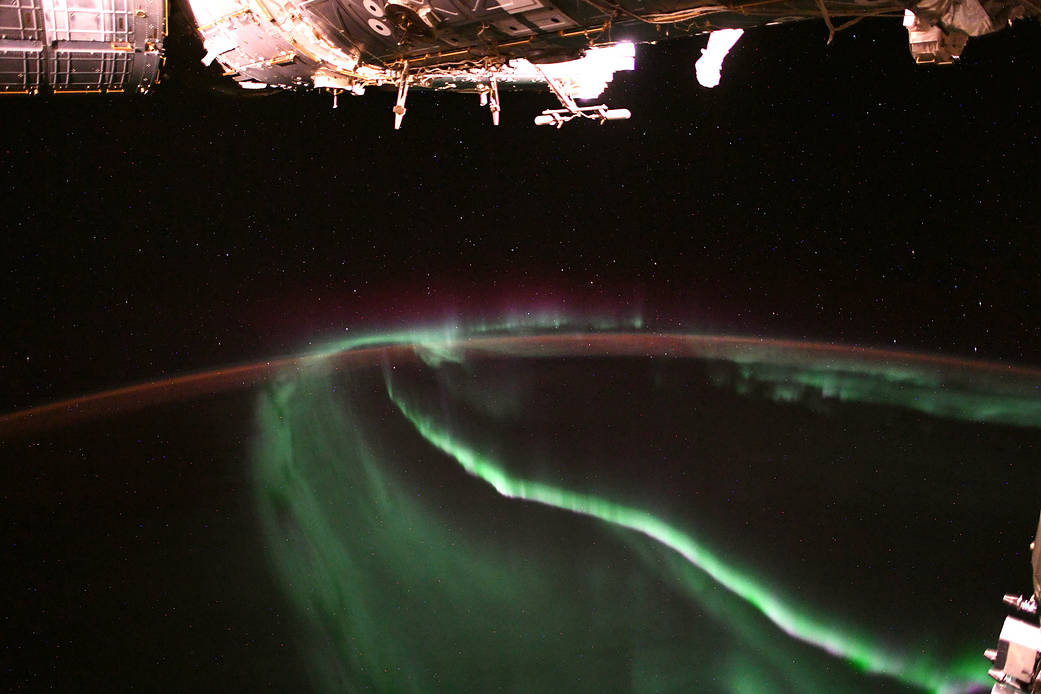Ever wondered what auroras look like from space? Astronaut Alexander Gerst, also known as @Astro_Alex, gives us his bird’s-eye view from aboard the International Space Station, tweeting that the experience is “[m]ind-blowing, every single time.”
The dancing lights of the auroras provide spectacular views on the ground and from space, but also capture the imagination of scientists who study incoming energy and particles from the Sun. Auroras are one effect of such energetic particles, which can speed out from the sun both in a steady stream called the solar wind and due to giant eruptions known as coronal mass ejections. After a trip toward Earth that can last 2 or 3 days, the solar particles and magnetic fields cause the release of particles already trapped near Earth, which in turn trigger reactions in the upper atmosphere in which oxygen and nitrogen molecules release photons of light. The result: the Northern and Southern lights.
Image Credit: ESA/NASA-A.Gerst





























